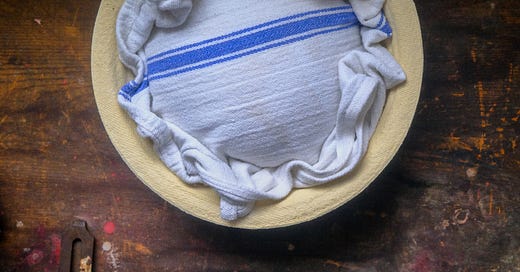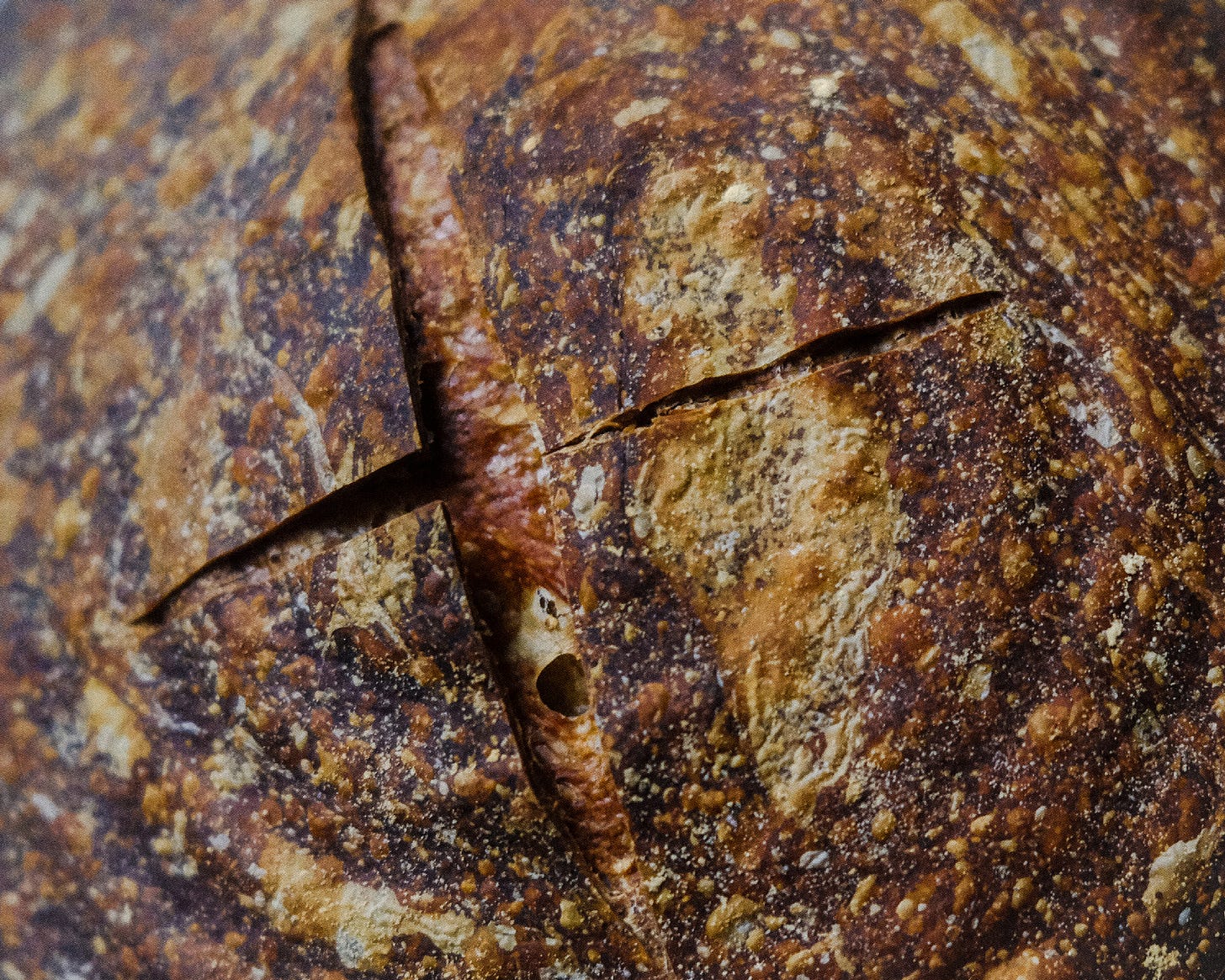How to bake bread, and the one fussy tool that changed it all for me
Too many words on bread!
This is part two of my series on baking bread; read last month’s letter here.
It’s a weird time for bread on the internet. Sourdough, in particular, has taken on a politicized mysticism—co-opted by influencer tradwives in peculiar Instagram Reels that associate sourdough baking with miscellaneous dog whistles. What the primary way to leaven bread for thousands of years has to do with “submitting to your husband,” I don’t know.
The other lane is how I first heard about at-home sourdough—the trope of the Type-A boyfriend obsessed with baking the perfect sourdough loaf. As much as I love bread, the focus on exact measurements, water filters, and lava rocks never appealed to me. I like cooking most when I can riff—I want to add things here and there and depart from a written recipe when my experience, taste, and intuition can take over.
Baking, famously, doesn’t allow for this. Or at least that’s what people say. There are scientific considerations that can make or break a loaf, it’s true, but bread is more intuitive and creative than the bread influencers give it credit.
I follow a recipe from Farmhouse on Boone for my weekly bread (just don’t judge the bad recipe photos). I like it for a few reasons: no fussy temperatures (god bless all who calculate DDT), pared-down steps, and little nighttime work. I don’t want to mix a loaf up at 9 pm!
On Farmhouse on Boone’s YouTube channel, she has shared more about her sourdough approach—she teaches that it’s okay to leave the shaped dough in the banneton in the fridge for days, if you need to, and to not panic about the timing of stretching and folding. I remember making focaccia dough the first time and timing my stretches and folds down to the second. You don’t need to do all that.
Baking bread can be flexible! Also, following a working mother’s recipe will produce less irritating results, IMO, the same reason restaurant cookbooks are annoying. Home cooks do not cook like restaurant cooks; the same goes for bread and bakers.
My husband isn’t much of a bread eater, so I typically half the Farmhouse on Boone recipe, though bread dough maintains its temperature better in larger quantities. I also use store-bought whole wheat flour as I don’t have a flour mill.
What I’ve learned as a bread newbie is that the most crucial thing is the rise. The most consistent results I’ve achieved with proofing/rising are from maintaining dough temperature, which I achieved with a collapsible bread proofer, but more on that later.
Sourdough
Knowing how to bake without granulated commercial yeast is a good skill. There is something satisfyingly ancient about producing such a wonder with only four ingredients.
Nutritionally, too, sourdough is a superior way to eat bread. The naturally occurring wild yeast in sourdough starter leavens the dough but also ferments the rest of the grain. As with most fermentation, this process makes wheat more digestible and more nutritionally available. (This means people with non-Celiac gluten intolerance can sometimes consume long-fermented sourdough, but discuss it with your doctor or nutritionist.)
Sourdough has a slight sourness that I enjoy. But you can achieve less sour-tasting bread with shorter fermentations.
BTW, I keep granulated instant yeast on hand and use it without guilt when I haven’t planned, but sourdough isn’t such a crazy learning curve if you haven’t baked at all before. Granulated yeast is more convenient because you can use it instantly without waiting four or so hours for a starter to wake up.
A short history of white flour
Wheat and gluten get a bad nutritional rap, not because of some inherent flaw of wheat, but because of white flour. White flour is technically an ultra-processed food. The flour we buy at the supermarket has had its bran and germ removed and its endosperm treated. This makes flour more shelf-stable and produces fluffier, lighter, and whiter products, but turns wheat—a highly nutritious food—into what could be considered a nutritionally dead product. White flour’s nutritional deficiencies aren’t new; it has been a public health nuisance since its widespread introduction.
Keep reading with a 7-day free trial
Subscribe to Home Food to keep reading this post and get 7 days of free access to the full post archives.



